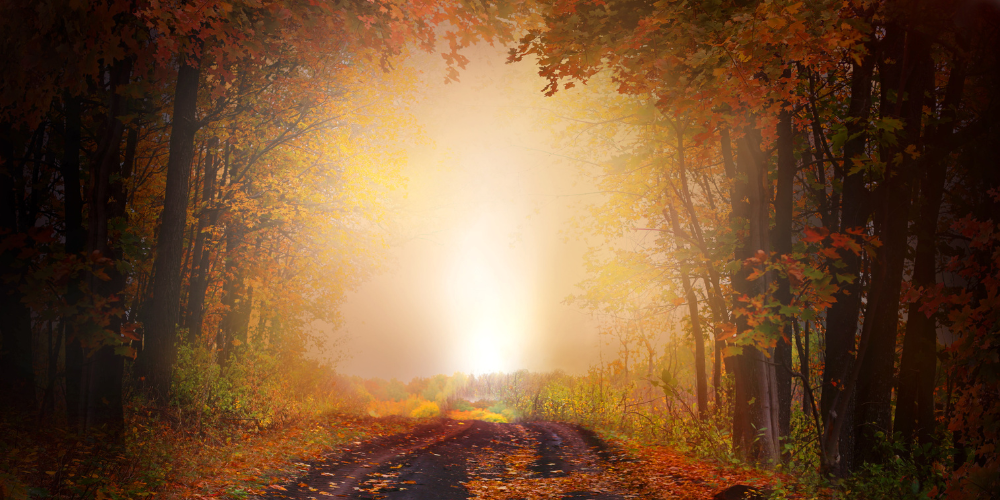Fantasy landscapes are more than just scenic backdrops; they appear as living, breathing things that mould the story, impact characters, and take readers to unimaginable worlds. From mist-wrapped mountains that claw at the sky to bioluminescent woods alive with movement, these landscapes are where magic meets the every day and the improbable materialises character. In this blog post, we are going to explore the art of writing fantasy landscapes with tips and techniques to help you capture your worlds perfectly in ticks.
Breaking Free from Reality: The Essence of Fantasy Landscapes
Although a fantasy landscape may be grounded in some aspects of the real world, it takes us to another place, somewhere remarkable and extraordinary. These are locations where the natural order skews to meet the demands of arcana, where gravity is just a guideline and not a law, and where flora/fauna defy biological typologies.
Consider the hovering mountains of Pandora in James Cameron’s Avatar, the fluorescent plant life of Avatar’s woods or the vast urban centres of Terry Pratchett’s Discworld. Defying expectations is what makes these landscapes unique and memorable.
Key elements that set fantasy landscapes apart:
- Magic: Whether you decide to imbue your landscapes with magic. It could be in the form of magical forests, talking rivers or controlled weather phenomena.
- Mythical creatures: Populate your world with fantastical beings. Dragons soaring through the skies, mischievous sprites hiding in the undergrowth, or colossal sea serpents lurking in the depths can add a sense of wonder and danger.
- Unique flora and fauna: Imagine plants that glow, trees that bear fruit with magical properties, or animals adapted to extraordinary environments.
- Altered physics: Play with the rules of the natural world. Perhaps gravity is weaker in certain regions, or time flows differently in ancient forests.
Building the Foundation: Conceptualising Your Landscape
You have to have a clear picture of your landscape before you start writing about the verdant valleys and snow-capped mountains. Consider these key aspects:
- Climate and geography: Is your world a scorching desert, a frozen wasteland, or a temperate paradise? Are there vast mountain ranges, sprawling plains, or labyrinthine cave systems?
- History and culture: how have civilisations shaped the landscapes? Is it an old ruin, a lost city, or hallowed sacred ground?
- Inhabitants: Who is there in this world? In what way do they relate to their surroundings? Are they symbiotic to nature or parasitic in their usage?
Example:
Imagine a world where the sun shines only once a year. It would drastically affect the ecosystem, leading to unique adaptations in plants and animals. Civilisations might revolve around harnessing and storing solar energy, and their architecture would be designed to maximise light capture during the brief period of sunlight.
Painting with Words: Describing Your Landscape
Once you have a solid concept, it’s time to bring your landscape to life through vivid descriptions.
- Engage the senses: Make it sensory; give your readers more than just the visual. How does the landscape smell? Sound? Touch? Taste, even? Is the air heavy with the smell of pine needles and wet dirt? Are your characters aware of the wind whistling through canyons or the roar of a waterfall in the distance?
- Use strong imagery and metaphors: Compare your landscape to familiar things to create a sense of wonder and scale. Are the mountains “teeth of the earth” or “claws scraping the sky”? Does the river flow like “liquid silver” or “molten gold”?
- Show, don’t tell: Instead of saying, “The forest was dark,” describe the way the sunlight struggles to penetrate the dense canopy, casting long, eerie shadows on the forest floor.
Example:
“The air hung heavy with the scent of decaying leaves and damp earth. A pale mist clung to the ground, swirling around the gnarled roots of ancient trees that clawed at the sky like skeletal fingers. The only sound was the drip, drip, drip of water echoing through the oppressive silence.”
Adding Depth: The Role of Culture and History
A truly immersive landscape is more than just a collection of physical features. It’s a place with a rich history and a vibrant culture.
- Ancient civilisations: Scatter your landscape with remnants of past civilisations. Crumbling ruins, forgotten temples, and hidden tombs can add a sense of mystery and intrigue.
- Legends and folklore: The legendary beasts, iconic heroes and ancient gods that make up the folklore of your landscape. They can dialect your world and serve as a background for the actions of your characters.
- Cultural impact: How have the inhabitants of your world shaped the landscape? Have they built sprawling cities, carved terraces into mountainsides, or diverted rivers to irrigate their fields?
Example:
Imagine a desert landscape where ancient tribes once carved elaborate petroglyphs into the rock faces, telling stories of their struggles and triumphs. These carvings could serve as clues for your characters, leading them to hidden oases or long-lost treasures.
Beyond the Visual: Creating Interactive Landscapes
Your landscape shouldn’t be a static backdrop. It should be an active participant in your story, influencing your characters and shaping their journey.
- Challenges and obstacles: When you need to make your characters interact with the landscape, they might have to climb over dangerous mountain passes, cross treacherous rivers, or endure blistering hot deserts.
- Resources and dangers: The landscape may be a resource, providing food, water, and shelter, or it can be a danger zone. Yet it can also threaten life, such as savannah animals, toxic plants, or snares.
- Magical influences: Imbue your landscape with magical properties that affect your characters. For example, a certain forest may grant wishes, or a mountain range may be home to powerful spirits.
Example:
Imagine a character who must journey through a forest where the trees are sentient. The forest could test the character’s worthiness by presenting them with challenges or offering them cryptic advice.
Mapping Your World: Bringing Order to Chaos
While spontaneity is essential, a well-defined map can be an invaluable tool for creating a cohesive and believable landscape.
- Visualise your world: Focus on connecting places, making travel plans, and picking distances. A map helps you visualise the relationships between all these aspects and gives consistency to how you describe them.
- Inspire new ideas: The actual process of mapmaking can inspire new locations, cultures, and plot points.
- Share your vision: A map can help readers visualise your world and follow your characters’ journey.
Tools for mapmaking:
- Traditional tools: Pen and paper, watercolours, and coloured pencils are used to create detailed and beautiful maps.
- Digital tools: Software like Photoshop, GIMP, or dedicated mapmaking tools like Wonderdraft or Campaign Cartographer offer a vast range of features for creating professional-looking maps.
Inspiration and Resources:
- Nature: Observe the natural world around you. Pay attention to the details, how light interacts with different surfaces, the sounds of the wind and water.
- Art and photography: Explore the works of landscape artists and photographers. Analyse how they use composition, colour, and light to create mood and atmosphere.
- Literature: Read fantasy novels with solid world-building. Please pay attention to how the authors describe their landscapes and how they integrate them into the story.
- Travel: Travel to new places and experience different environments firsthand. It can provide invaluable inspiration for your own creations.
Conclusion
It is a delightful exercise in releasing inner creativity to craft exciting, tangible worlds for your viewers/readers to explore with their imaginations and gain an understanding of a fantasy landscape. Using realistic foundations as a base but adding unrealistic aspects allows you to create lands that feel real and staggering at the same time. Remember that the trick is to engage all the senses, including cultural and historical landmarks, and not only have your landscape be a backdrop for your art/story but also be an active character in it!
Disclaimer
The suggestions and ideas presented in this blog post are intended to inspire and guide you in your creative process. Ultimately, the most important thing is to have fun and let your imagination run wild. There are no definite or fixed rules when it comes to creating fantasy landscapes. The only limit is your own imagination.


